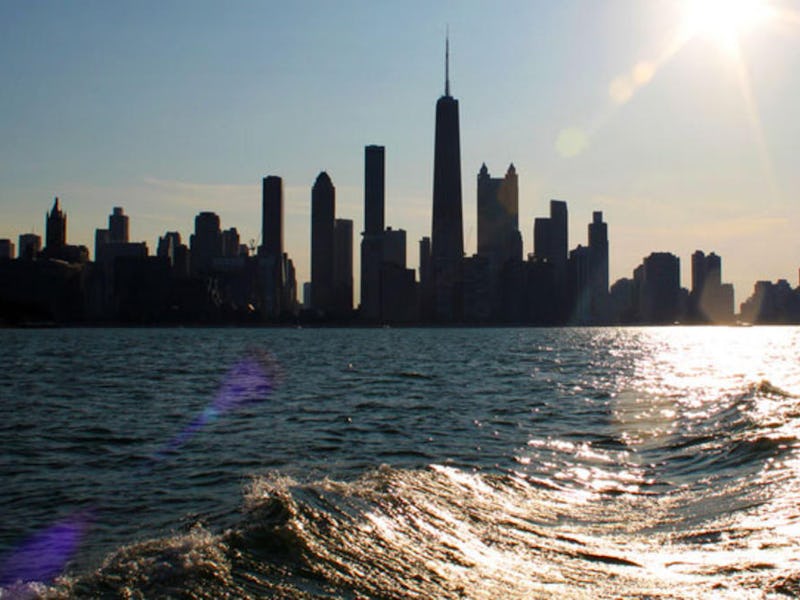Here at Inverse, we like to explore horrifying, if unlikely, scenarios, which is why we’ve publicly mulled what would happen if Cleveland’s corpses rose from their graves, if a Tyrannosaur got loose in Minneapolis, and if there were a nuclear meltdown in Kansas. This week, Lake Michigan does the wave.
Of the impossible and gross scenarios we’ve explored at Inverse, a Chicago tsunami, or at least a giant wave that forms in Lake Michigan, may be the least totally unlikely. The Great Lakes isn’t very active, tectonically speaking (it’s got its faults), but there are other ways to trigger a tsunami. Meteotsunamis occur when rapid pressure changes in storm conditions force big waves to stack up; there’s also the seiche — from the French to sway — waves that arise from weather patterns which slosh entire bodies of water to one side. These have fatally slammed into Chicago shores, though not with the same destructive force as a tsunami. Landslides — like the 1958 collapse of rock above Lituya Bay, Alaska, which created a record 1,720-foot wave — or tremedous impacts can trigger tsunamis as well. And if none of that works, there is always bombing: U.S. scientists spent an unhealthy part of WWII trying to create a tsunamis using tactical nukes.
Let’s say, for the sake of argument/narrative flow, that a magnitude 9.0 earthquake — or an equivalent impact event — sent a significant deal of Lake Michigan’s 1,180 cubic miles of water toward Wrigley. What would that look like? In fact, in the wake of Japan’s 2011 megathrust tsunami, an Illinois civil engineer named Calvin Lu modeled what might happen. According to his calculations and map, areas as far from the shore as Logan Square — about four miles from the coast — would be underwater. Lu overlaid the area from the Great Chicago Fire in the late 1800s, which killed about 300 people. Comparing the respective swaths of destruction, the Great Fire looks like nothing but a spark. The city is flat and a wave could destroy it easily. It’s pretty much that simple.
With a population of about 2.7 million and some of the densest areas in the United States — overall, the city ranked 75th densest metropolitan area, as of the 2010 census, with 11,000 people per square mile — the outcome would be grim. In 1954, a large surge of water killed eight Chicagoans. The furthest that seiche wave made it inland was about 150 feet. If we’re talking about a real tsunami, we’re talking about miles and tens of thousands dead. We’re also talking about the destruction of the coastline and an almost impossible number of Polish eateries.
This is the time of the year when people in Chicago start complaining about “The Hawk,” that cold wind down the avenues. Yeah, it’s not ideal. But it could be worse.
